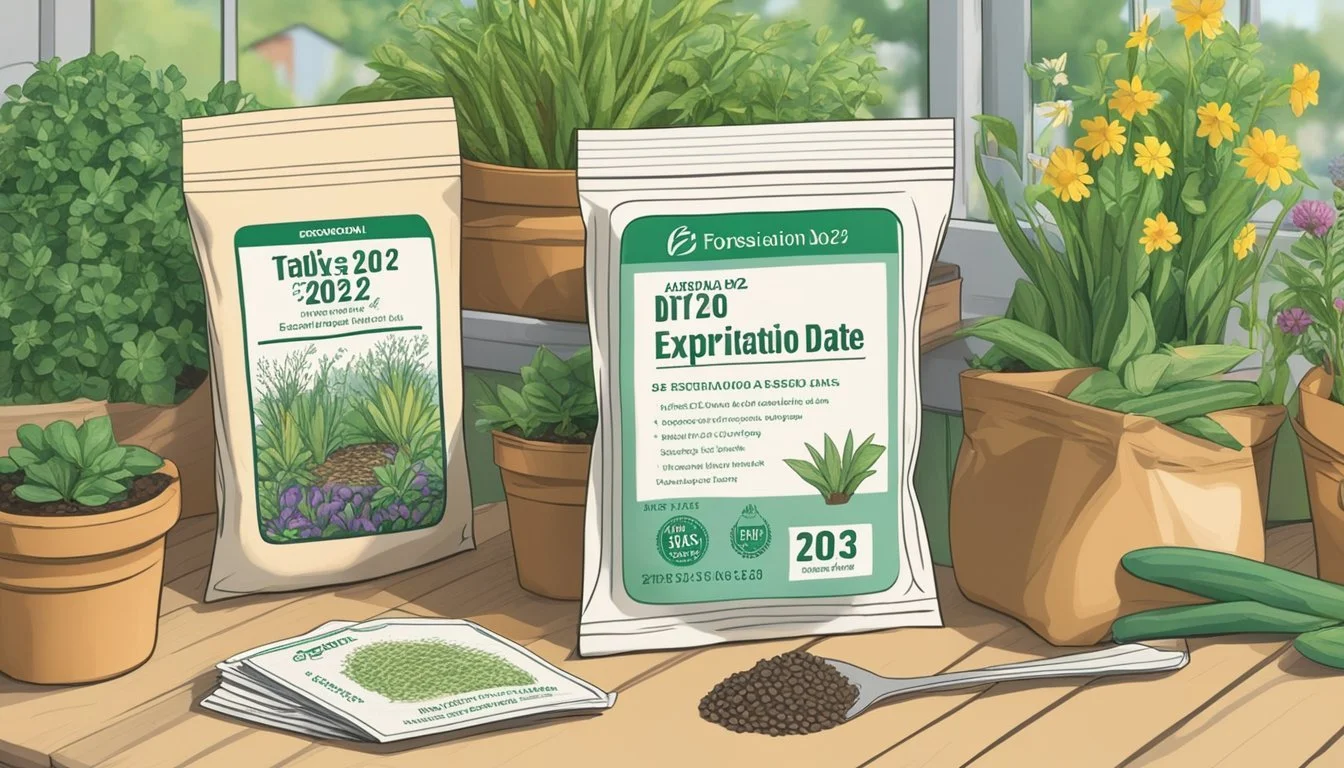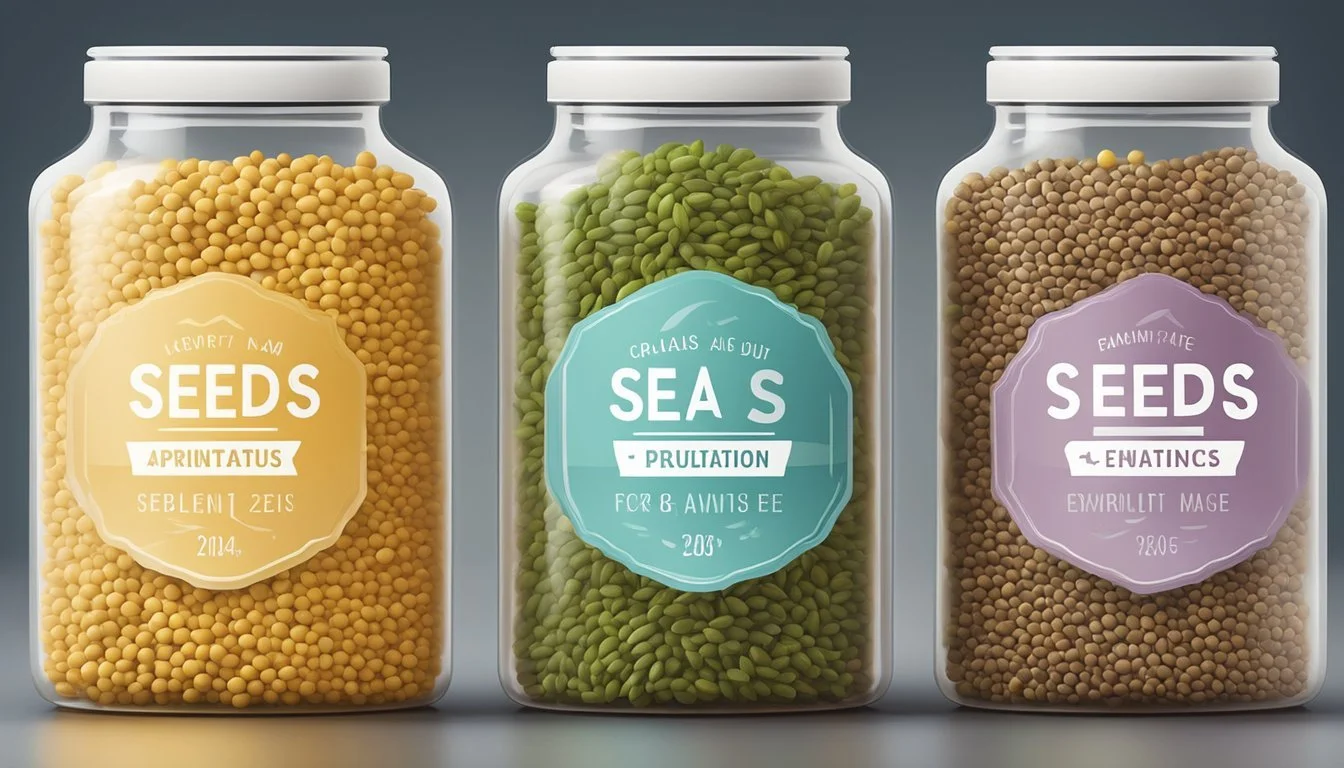How Long Do Seeds Last
Shelf Life and Viability Factors
The longevity of seeds (how long do seeds last?) is a key concern for gardeners planning their season's planting schedule. Seeds vary greatly in their shelf life, with some remaining viable for a few years, while others may last a decade or more if stored under optimal conditions. Generally, the viability of a seed—its ability to germinate and grow into a healthy plant—is determined by its type, the conditions under which it has been stored, and its age. Proper storage is crucial and typically involves keeping seeds dry and at a consistently cool temperature, often in airtight containers.
Most vegetable seeds are suitable for planting for about two to three years, but this is not uniform across all species. For example, seeds such as onions tend to lose their viability faster and are best used within a year of being packaged. Conversely, seeds like lettuce may germinate successfully even after five years. The decline in germination rate as seeds age is gradual and not absolute, indicating that older seeds might still sprout, albeit at lower rates.
To maximize the chance of germination, gardeners should be aware of the specific storage needs and expected lifespan of their seeds. Some seeds, like those of tomatoes, have been known to germinate after many years if their storage environment is ideal. Understanding the factors that influence seed longevity helps in making informed decisions about seed selection and purchasing, thereby reducing waste and ensuring a successful and productive garden.
Basics of Seed Viability
In understanding the practicality of seed usage, one must consider seed viability—the likelihood that seeds will germinate—and the various factors that influence it.
Defining Viability
Seed viability refers to a seed's ability to germinate under suitable conditions. It is indicated by the germination rate, which is the percentage of seeds that successfully sprout. Seed packets usually provide information about the seed viability window, allowing gardeners to know how long seeds are expected to remain viable.
Seed Lifespan Factors
Several key factors affect seed lifespan and viability:
Storage Conditions: Seeds need to be stored in a cool, dry place to maintain viability. Humidity and high temperature can significantly reduce the viability period.
Seed Type: Different types of seeds have varying lifespans. For instance, seeds of onions may remain viable for up to two years, whereas seeds of broccoli or lettuce can last for five years or more.
Age: As seeds age, their viability decreases. Most seeds maintain optimal viability for a couple of years from their packing date if stored correctly.
Employing appropriate storage methods and understanding the inherent lifespan of seeds are essential strategies for gardeners to optimize the use of their seed supply.
Types of Seeds and Their Longevity
Seed longevity varies widely by species, and proper storage conditions can dramatically extend a seed's viable life. Understanding the typical shelf life of seeds helps gardeners plan for future growing seasons and ensure successful germination.
Vegetable Seeds
Onions: Typically last 1-2 years.
Beans: Can remain viable for about 3 years.
Lettuce, Tomatoes, Cabbage, and Peppers: Generally good for about 3-4 years.
Carrots and Parsnips: Have a shorter lifespan, often around 1-3 years.
Cucumbers, Corn, and Peas: These seeds often last 2-3 years.
Root Vegetables (Beets, Turnips): Around 4 years.
Leafy Greens (Spinach, Kale): Vary between 3-5 years.
Melons (Watermelon, Cantaloupe (how long does cantaloupe last?)): Seeds can be viable for up to 4 years.
Flower Seeds
Annuals: Such as Marigolds and Zinnias can last for 1-3 years.
Perennials: Often have a longer viable period, ranging from 2-4 years, depending on the species.
Wildflowers: Can vary, but many remain viable for 3-4 years on average.
Herb Seeds
Basil, Chives (how long do chives last?), Cilantro, Dill, and Oregano: These seeds can last between 1-4 years, with many gardeners finding them viable closer to the 2-year mark.
Sage: Tends to have a longer lifespan, up to 3-5 years under good storage conditions.
Mitigating factors such as moisture, temperature, and light exposure can enhance or diminish these estimates, requiring adherence to recommended storage guidelines for optimum longevity.
Seed Storage Practices
Effective seed storage practices maximize the viability of seeds over time. They ensure seeds remain dry, cool, and are prevented from premature germination or spoilage due to environmental factors.
Optimal Storage Conditions
For storing seeds, maintaining a low humidity and cool temperature is crucial. The ideal humidity level is between 5% to 20%, and seeds should be kept at temperatures between 32°F (0°C) and 41°F (5°C). A basement or a refrigerator can provide the stable conditions necessary for prolonged storage. In a refrigerator, seeds benefit from consistent temperature with reduced risk of temperature fluctuations that might occur in other storage areas.
Container Types
The choice of container is essential in preserving seed quality. Airtight containers made of materials like glass, metal, or certain plastics are effective in keeping moisture out and maintaining the proper humidity levels. Plastic bags can be used, but they should be sealed and possibly placed within a sturdier container to protect against punctures or rodents. For added protection, silica gel packets can be included to absorb any residual moisture.
Germination and Planting
Successful germination is the first step towards a fruitful garden, and understanding the right timing for planting is crucial for optimizing seed viability and yield.
Conducting a Germination Test
A germination test is a simple method to check the viability of seeds before planting. Gardeners can place a random sample of seeds, often about 10, on a moist paper towel, which is then kept in a warm place. After 2-3 days, sprouts may emerge, indicating viable seeds. This test should continue up to 14 days to give all seeds a chance to germinate.
Day Germ. Rate Notes 3 20% Low germination, fresh seed advised 7 60% Moderate germination, may plant more densely 14 80% Good germination, seeds are viable
Timing for Planting Seeds
Planting should be strategized based on the results of the germination test. Fresh seed generally shows higher germination rates and can be planted according to recommended spacing. Old seeds with lower germination rates may need to be planted more densely or replaced if the germination rate falls below an acceptable level. The ideal planting time varies by species and is typically indicated on seed packets.
Seed Storage and Shelf Life Table
When gardeners purchase seed packets, it is vital to understand the life expectancy of the seeds contained within. Seeds have varying shelf lives, and knowing how long seeds last can be instrumental in planning a garden. Below is a table that outlines general shelf lives of common vegetable seeds when stored under ideal conditions:
Vegetable Shelf Life (Years) Asparagus 3 Broccoli 3-5 Lettuce 3 Tomatoes 4 Peppers 2 Cucumbers 5 Peas 3 Beans 3 Carrots 3 Corn 2
These numbers represent an optimal scenario where seeds are kept in a cool, dry place. The moisture content of the seeds, their viability when initially stored, and the specific variety may affect these estimates. For best results, seeds should be stored in a sealed glass jar in the refrigerator, potentially with a desiccant to manage humidity.
Planters should note that as seeds age beyond their typical shelf life, their germination rate declines, but some may remain viable past the expected date. Regularly testing a small sample of older seeds for germination can help determine their usability for planting.
Troubleshooting Common Issues
When managing seed longevity, gardeners may encounter issues like mold and decreased viability. Addressing these concerns promptly ensures quality maintenance and improved germination rates.
Identifying and Preventing Mold
Mold poses a significant threat to seed quality, often identifiable by a white, fluffy substance on the seeds or inside the seed packets. Preventing mold is crucial and can be achieved by:
Storage: Store seeds in a cool, dry place.
Silica Packets: Include desiccant packets to absorb moisture.
Airtight Containers: Use containers that seal well to keep out humidity.
Maximizing Seed Potency
The potency of vegetable seeds is determined by how well they’ve been stored and for how long. Gardeners can take steps to maximize the germination rates and longevity of their seeds:
Environment: Keep seeds in a stable environment, avoiding extremes in temperature and humidity.
Rotation: Use older seeds first to avoid exceeding their viable shelf life.
Documentation: Label seed packets with the purchase or harvest date.
Testing: Periodically test a sample of seeds for germination rate.
By taking these measures, one can ensure the highest quality and viability of seeds for future planting seasons.
Advanced Seed Longevity Topics
In this section, the focus is on detailed aspects of seed longevity, such as the specificity of information in seed catalogs and the influence of storage and environmental factors on seed lifespan.
Seed Catalogs and Their Information
Seed catalogs often provide essential data for gardeners and farmers, including the expected lifespan of seeds. They may list celeriac with an average lifespan of 3-5 years, collards and mustard (how long does mustard last?) for 4-5 years, and turnips for 4 years. Watermelons, due to their particular storage needs, generally show a viable period of about 4 years. These catalogs serve as guides, but actual longevity can vary based on storage conditions.
Impact of Environmental Factors
The longevity of seeds is critically affected by how they are stored. Ideal storage environments are consistently cool and dry, conditions often best achieved in a controlled setting such as a kitchen pantry or a specially designed storage facility. Fluctuations in temperature, particularly warm environments, can greatly reduce the viability period of seeds.
Temperature: Optimal storage temperature for seed longevity is usually between 40-50°F (4-10°C).
Moisture: Keeping moisture levels low, ideally between 8-10%, is crucial to prevent mold and bacterial growth.
These advanced topics in seed longevity underscore the importance of accurate information and careful storage practices to preserve the viability of seeds over time.
Conclusion
Seed viability varies significantly across different types of seeds. A general guideline is that seeds can remain viable from one to ten years under proper storage conditions. Seeds' longevity depends heavily on the seed type and storage environment.
Factors Influencing Seed Longevity:
Seed Type: Some seeds, like those of tomatoes, can germinate after many years, while others have shorter lifespans.
Storage Conditions: Cool, dark, and dry conditions extend seed life.
Recommendations for Seed Storage:
Containers: Use moisture-proof containers, such as glass or metal.
Environment: Store seeds in a cool, dry place away from direct sunlight.
Assessing Seed Viability:
Visual Inspection: Look for any obvious signs of deterioration or damage.
Germination Test: Plant a sample of seeds and see if they sprout, which is the most definitive indicator of viability.
In conclusion, gardeners should remain aware of the expected lifespan of their seeds and optimize storage conditions to maintain seed viability for future planting seasons. Regular viability checks can help determine if seeds are worth planting or need replacement.




